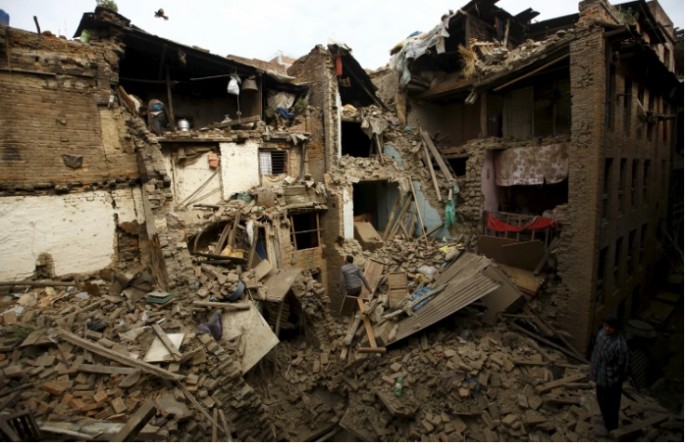The magnitude-7.8 Nepal earthquake that has taken the life of 2,500 people is something that experts knew was about to happen, USA Today reported.
A week ago, about 50 earthquake scientists from all over the world gathered in Nepal's capital Kathmandu to discuss how the area would deal with such calamity.
Nepal sits on colliding tectonic plates and is under regular earthquake threat. According to experts, Nepal's poor construction standards and low-grade infrastructure make it less equipped to cope with the aftermath of big incidents.
James Jackson, earth sciences department head at the Cambridge University, said that geologically and physically what occurred is precisely what we thought would occur.
A same magnitude earthquake can have larger effects on different regions of the world because of the population density and the manner of building construction.
David Wald, the United States Geological Survey seismologist, said that a 7.8 magnitude earthquake could kill 10,000 people in parts of China, Iran, India and Pakistan and could kill 10 to 30 people per one million people in California.
Geohazards International, a non-profit organization committed to reducing risks of earthquake in the developing world, has listed the Kathmandu Valley area as the world's most dangerous place in terms of per capita casualty risk.
The group said in a report that an individual residing in Kathmandu is 60 times more likely to be killed by an earthquake than an individual residing in Tokyo, and is nine times more likely to be killed by an earthquake than an individual residing in Islamabad.
Furthermore, the report said that a school kid in Katmandu is 30 times more likely to be killed by an earthquake than a school kid in Tashkent, Uzbekistan, and is 400 times more likely to be killed by an earthquake than a school kid in Kobe, Japan.
This is the fifth major earthquake in Nepal in the past 205 years, according to Daily Mail Online.



























